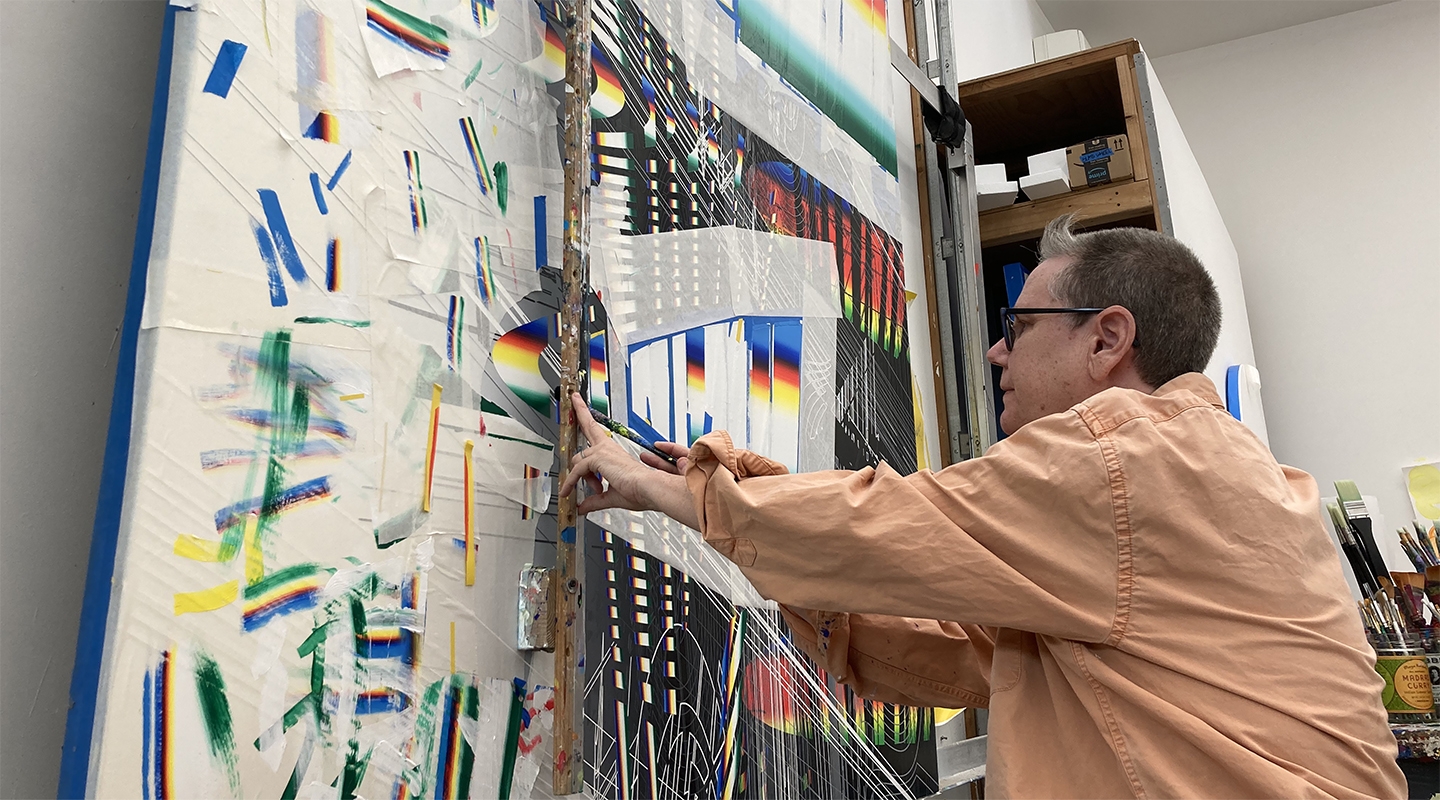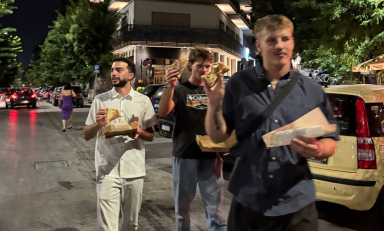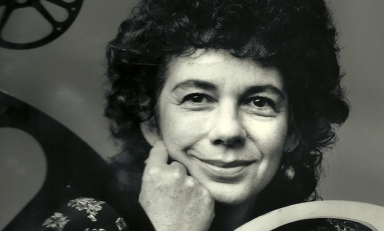Retiring from teaching—but not from painting—following their Guggenheim sabbatical year, Besemer says of their time at the College, "Occidental gave me a life where I could thrive"
Linda Besemer
James Irvine Distinguished Professor, Art and Art History
Years at Occidental: 36
In 2022, you became the eighth Oxy faculty member to receive the prestigious Guggenheim Fellowship. What impact has the fellowship had on your work?Just to have been a recipient of the fellowship is a tremendous honor. To be acknowledged by and earn the respect of the top professionals working across the country in the same field is truly empowering. The fellowship has given me time and money to research ideas and experiment with new techniques that are helping me in the development of a new body of paintings. I’ve also been able to buy tools, machines, and materials I could not otherwise afford.
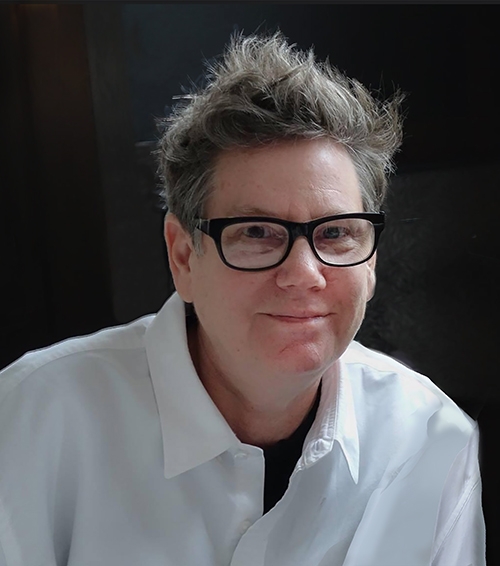
What will you miss about being in the classroom?In two words: the students. Since I began at Occidental in 1987, I have had the great privilege of working with thousands of brilliant and extraordinary students. I loved sitting one-on-one with a beginning student working on their first painting—struggling to transform inchoate blobs of colored goo on their palette into a recognizable image on the canvas. I would make observations and suggestions, and perhaps even paint a problem bit for them, and then watch their paintings take on a life of their own. They may not have all majored in art, but they all brought their perspectives to making art and visual expression.
What I like best about Oxy students is their varied interdisciplinarity. Students bring their academic interests, political and social justice consciousness, and critical thinking skills from all their other experiences into their paintings’ themes and processes. For example, the same assignment prompt could inspire an image of microbial symbiosis, a critique of latent lesbian imagery in Bollywood films, or a philosophical discussion on phenomenology and affect in non-representational abstraction. It was always surprising, and I was able to learn so much from them.
Fortunately, I have stayed in touch with many of my graduating students. I am happy to say some are now art world peers with successful teaching and exhibition careers.
What are your plans for retirement?I am retiring from teaching but not from painting. Instead, it is shifting from one emphasis to another. I had to juggle teaching and making art for most of my life. I now have the opportunity to paint all day—every day! In other words, become a full-time, all-the-time artist. However, I will continue to exhibit and guest lecture at other schools, museums, and art institutions, so not entirely out of academia. During my Guggenheim sabbatical this year, I discovered I have time to read for pleasure, research, and to think. I have the space to process an idea, let it sink in, form, and reform it. This luxury is almost impossible while fulfilling the many roles of a full-time faculty member.
My partner and I also plan to travel with our golden retriever, Jackson (named after Jackson Pollock), and our Great Pyrenees, Emma (named after Emma Goldman, the anarchist, and she lives up to her name).
Anything else you would like to add? I moved from New York City to teach at Occidental. There, I taught as an adjunct at multiple schools and painted houses to make ends meet. I lived in a fourth-floor walk-up railroad flat with five other people and had a tiny studio in a very sketchy neighborhood. Occidental gave me newly renovated studios to teach in, a private studio to do my work, time to do research, travel funds, housing (pre-tenure), and helped me mortgage my first home. Occidental gave me more than a job—a life where I could thrive.
Lastly, and by no means least, I will miss my colleagues at Occidental. Like my students, I also benefited from being at an institution that encourages interdisciplinarity. Having colleagues within my department and across the college who supported my teaching and advancements at Oxy and generously shared their research and intellectual interests with me was a tremendous gift. I wholeheartedly believe I would not have done the work I did, nor achieved my successes, had I not been at Occidental surrounded by a vibrant community of vital scholars, scientists, poets, artists, and musicians.
“I wanted to be a professor just like Linda.”
Tucker Neel ’03:During my first month at Occidental, I had the honor of being asked by Linda Besemer to be their teaching assistant. We were in their campus studio and Linda was wearing sneakers caked with so much paint they were practically clogs. Without hesitation, I said yes to Linda’s offer, and it turned out to be one of the best decisions I ever made. I was quickly put to work filing papers, pulling slides, and learning how to help Linda make their fascinating paintings. This involved me applying masking tape in hundreds of parallel lines to layers of acrylic paint Linda would eventually free from the wall to create pieces that boggled the mind and challenged the patriarchal legacy of Greenbergian abstraction. It was repetitive work, but I loved it, especially because it meant I got to hang out with Professor Besemer, listen to their albums, pet their dogs, and get a peek at what it was like to be a real teaching artist.
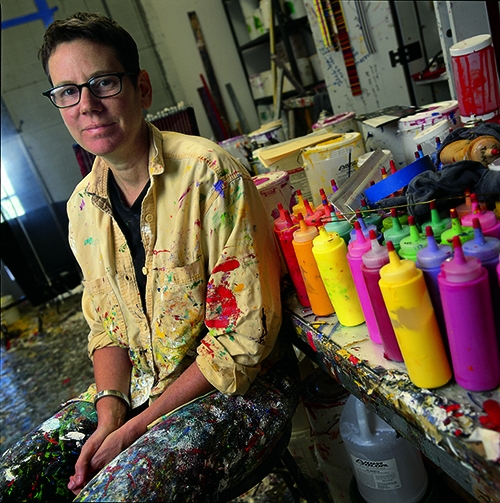
Linda is direct, asks tough questions, and demands honest answers in and out of the classroom, yet their teaching philosophy is rooted in love and compassion. I still remember one overcast day Linda surprised our drawing class by filling the center of the room with hundreds of fragrant, gorgeous flowers, saying, “If you have to spend all this time drawing, it might as well make you happy.” I’ve seen their contagious passion for art turn clueless frat boys into feminist abstract painters and war veterans into committed watercolorists. At the end of my first year at Oxy, after seeing their commitment to their students and their art, I realized I wanted to be a professor just like Linda.
A year or so later Linda gave me one of their paintings, a floppily rainbow-striped rectangle of pure acrylic paint punctured by metal grommets. Slightly damaged from an installation experiment gone awry, the painting wasn’t fit for gallery exhibition, but it quickly became one of the most important objects in my life and has hung over my bed ever since. Every time I look at it, I think about how much Linda has meant to me and countless other artists.
Linda’s impact on my life extends beyond my time at Oxy. They helped me get into grad school, lent their work to exhibitions I’ve curated, and showed me how to find my way in the art world. Their advice about how to navigate academia has routinely saved my sanity and my job. Almost a quarter-century after that first meeting in their studio, I am now a full-time associate professor at Otis College of Art and Design, and I could have never done it if not for my teacher, mentor, and friend Linda Besemer.
Neel is an artist, writer, curator, and educator living and working in Los Angeles. He completed his MFA from the Otis College of Art and Design in 2007 and has taught at the college since 2010.
“I can’t recall what I believed painting could be … but it has never been the same since.”
Zoe Walsh ’11: In spring 2009, I took my first course with Linda Besemer—Intermediate Painting. Linda provided a rigorous, unique, and accessible lens into contemporary debates around form and politics in painting. Personally, as a queer student, Linda’s presence and teaching were formative in my own coming into self and understanding how my political subjectivity could be applied to my work. I can’t recall what I believed painting could be prior to 2009, but I know that it has never been the same since.
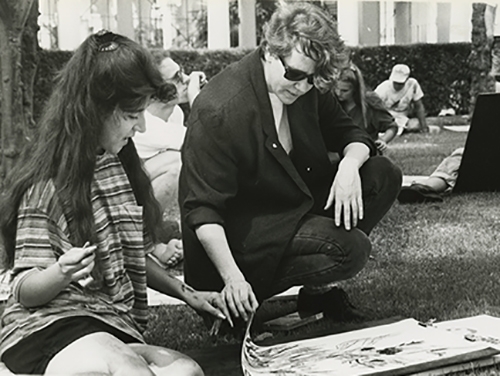
I sought out Linda’s instruction frequently and unabashedly throughout the rest of my time at Occidental, and Linda was always available as a guide into my own work and next steps beyond school. After graduating, I worked as Linda’s assistant and was able to witness firsthand their devotion to the practice of painting, willingness to restart and revise, and brilliant experimental making. In both the practice of teaching and the practice of painting, Linda always maintains a sense of embodied playfulness.
Linda’s guidance has continued through my graduate school education and early career as an artist and teacher. I have been the beneficiary of Linda’s support in the form of endless recommendation letters, advice about potential exhibitions, and even production assistance when I began using new technology in my work. Linda is a model of dedication to a lifelong art practice and ethical commitment to opening doors for future generations.
Linda, I am so immensely grateful for all that you have taught me, your patience over the years as I showed up to work perpetually 10 minutes late, your drive, your reading recommendations, your long view of art history, and your prescient interventions in painting today. Thank you for the immeasurable impact you have made in my life.
Walsh has an MFA from Yale University. They have held solo exhibitions at the Fondation des États-Unis in Paris as well as M+B Gallery and Pieter in Los Angeles.
Top photo: Besemer, working with a straight edge on a lift at their studio in 2022.

